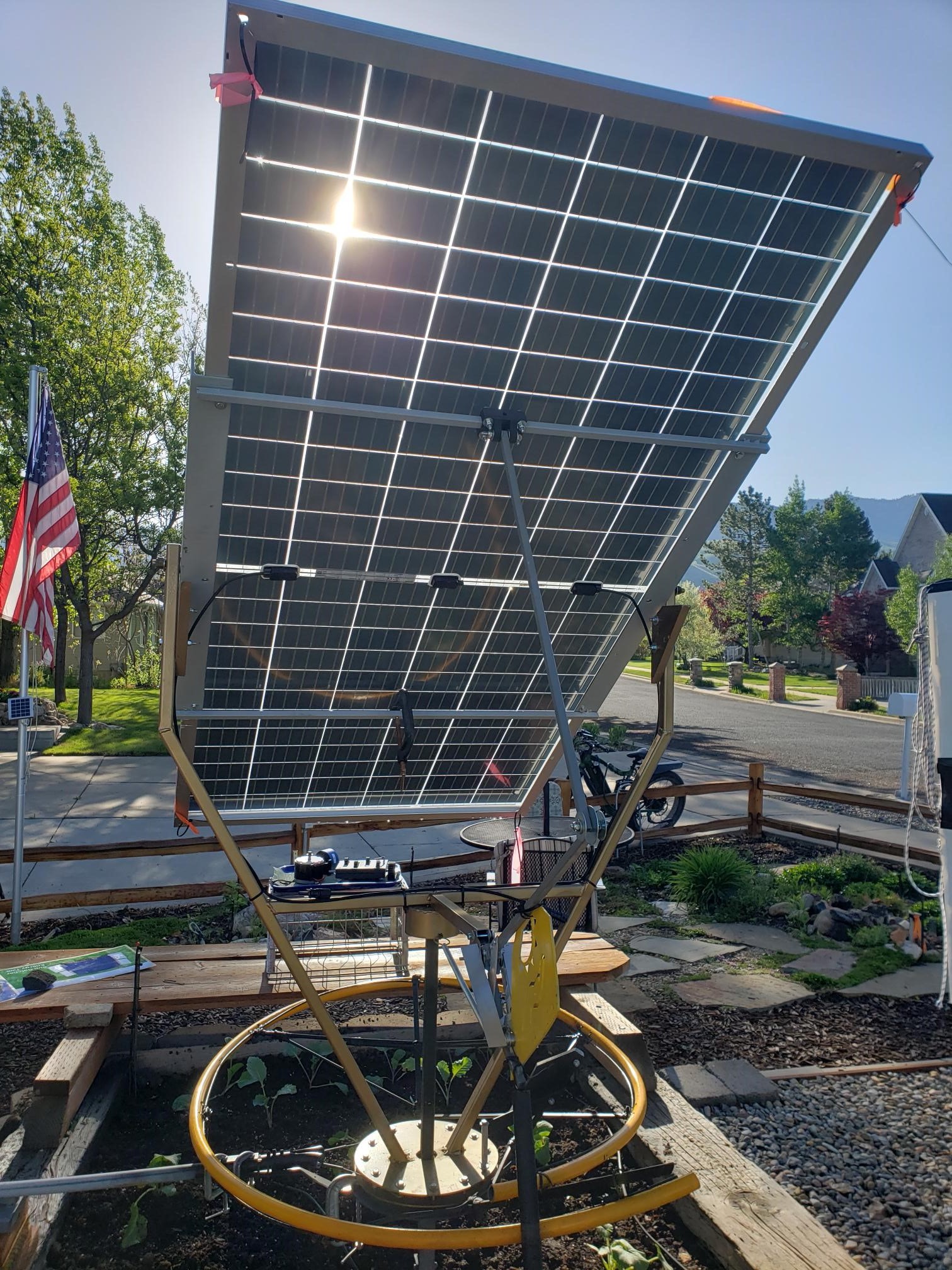Solar Tracker
This solar tracker allows the trajectory of the sun to be calculated and built into the tracker during manufacture of solar panels and concentrators, which reduces the cost of solar energy equipment and increases access to renewable energy.
Problem
Photovoltaics, non-conventional solar panels, and solar collectors are among increasingly popular renewable energy technologies. To maximize productivity, these devices must face the sun as its position changes. Compared to fixed devices, moving with the sun’s position increases overall energy production by 20-60%.
Generally, a computer located where the panel and pole connect at the central support point controls the solar tracker, ensuring the panel moves with the sun. The complexity of the tracking mechanism, made up of motors, controllers, sensors, gears, and bearings, can increase cost and require more frequent maintenance.
Solution
The solar tracker developed at Utah State distributes force, torque, and mass over a modular frame and eliminates the complex two-axis control and actuation of the pole-mounted approach. Rather than using computers to determine the position of the sun, the trajectory of the sun is calculated beforehand and built into the tracker during manufacture. A single low-torque, low-power motor replaces the complex high-torque mechanism of the pole design.
Benefits
Utah State’s solar tracker reduces the cost, maintenance, and operation of solar panels and solar concentrators. Solar concentrators, which use hundreds to thousands of separate collectors in a single system, could see the enormous cost and labor savings. Even a single solar panel system can benefit from this technology, making it easier to create standalone systems.
Applications
Solar energy systems, photovoltaics, and solar concentrators can all benefit from this solar tracker. In the future, this solar tracker could also be used on moving panels that block the sun like car visors or table umbrellas. The ability to apply this tracker to small-scale panel systems means homes, schools, and businesses in both urban and rural areas could benefit from this technology as well as large solar power companies.

Contact
Questions about this technology including licensing availability can be directed to:
Alan Edwards, MA, JD
Manager, Technology Transfer Services
(435) 797-2328 alan.edwards@usu.edu
Inteum IDs:
C17021
C17030
Development Stage
TRL 3
Conception, device design, modeling

